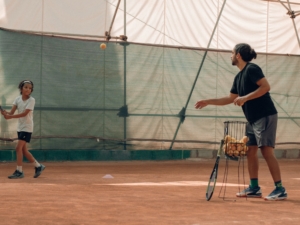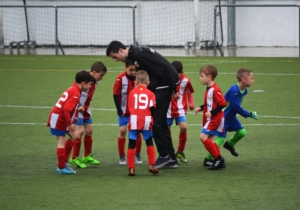How Educators and Coaches Can Protect Children’s Mental Health
If you are a parent, you know that your child’s teacher or coach can have a significant impact on your children’s mental health. One of the more compelling reasons to allow children the opportunity to participate in a club or sport is that he or she will have more adults influencing them.
As a parent, it can be scary to think of other adults influencing your child. But when it comes to children’s mental health, having a supportive teacher or coach in your child’s life can make a huge difference in positive mental and socio-emotional wellness. Newport Beach Christian Counseling offers support to help parents navigate these relationships and ensure their children’s mental health is being nurtured in healthy, constructive ways.
What is mental health?

The Centers for Disease Control and Prevention defines mental health as “our emotional, psychological and social well-being. It affects how we think, feel and act. It also helps determine how we handle stress, relate to others, and make healthy choices.” (CDC)
Mental health is important at every stage of life. How our children’s mental health influences what they believe, how they respond, and whom they choose to hang out with are key factors in their development.
How coaches can protect children’s mental health
A child’s development into adolescence is an important stage in his or her life. Often, it’s a coach who can spot the signs that one of his or her players is struggling emotionally, psychologically, or socially.
Consider the role coaches play in a child’s life. Coaches are with their players after they found out that they didn’t make the school play. They’re there when a player gets shunned by another classmate or even a fellow player. Coaches have the power to be a positive influence on a child’s ability to recover from such experiences.
How can a coach help?
Pay attention to your players’ behaviors, responses, and emotions
The U.S. Department of Education says that in young children, emotional responses are often the easiest way to see that a child may be struggling. If a child cannot bond with other kids or gets easily upset by something that appears to be small, it should not be overlooked.
 A child who erupts in anger over a missed goal may be having social and emotional issues beyond the coach’s ability to navigate. However, by paying attention to a player’s response, the coach can bring the player’s behavior to light with a trusted school counselor or parent.
A child who erupts in anger over a missed goal may be having social and emotional issues beyond the coach’s ability to navigate. However, by paying attention to a player’s response, the coach can bring the player’s behavior to light with a trusted school counselor or parent.
Seek out specialized training in children’s mental health
Talk to your school’s counseling department or ask the recreation department if there are resources in place to help coaches learn about youth mental health. It’s easy to spot a behavioral issue, but it’s much more complex to get to the root of that behavior.
Getting adequate training and support related to youth mental health is key to equipping coaches to help a young person who needs guidance.
Recognize that success in the sport you coach is not the overall goal
Even the most competitive sports programs should reflect an overall goal of shaping a child’s character. Research suggests that participating in sports can boost a child’s self-esteem, help him or her learn foundational life lessons such as perseverance and hard work, and teach how his or her actions impact a group of people.
Reminding yourself that you are a key player in the way a child reads the world and interacts with the world is important. It can mean the difference between shaming or humiliating an adolescent and expressing that you understand and that we all make mistakes.
Find out where you lack adequate mental health support in your own life
We can only go so far in our natural responses to life. And that includes life on the court or the field. If we have experienced trauma or difficulty in relationships, we could unknowingly transfer unhealthy outlooks and responses to the players we coach. Being aware of our own mental health and being proactive in pursuing healing is a foundational step toward guarding the youth under our care.
Be willing to look like a fool in the room or on the field

Young people are impressionable. They want to please their coaches, teachers, and peers too. When you are willing to show your vulnerabilities, you can pave the way for it to be okay for them.
One recent article supports that teens are more likely to reach out to a coach or a teacher than they are a parent. That’s a powerful responsibility. When you admit that you were wrong, ask for a young person’s forgiveness, or share a hurdle you’ve had to overcome in life, you are modeling what it looks like to share a struggle with others.
How teachers can protect children’s mental health
Teachers, collectively, may spend more time with students than their parents during the school year. So it makes sense that they would have a front-row seat to a student who is struggling. The World Health Organization reports that more than half of all mental health struggles in young people begin before the age of 14. So teachers play an integral role in recognizing those struggles and helping a child.
First, teachers can get to know their students. Learning something about each student helps a teacher recognize when that “something” is gone. For example, if a teacher learns that one of the students in his class enjoys drawing and artistic endeavors, he may be better equipped to spot when the desire to draw or pursue art isn’t there anymore.
One of the most common signs of depression is a loss of interest in an activity previously enjoyed. When a teacher can identify something that’s missing in one of his or her students’ typical behaviors, he or she can ask the student what might be wrong. Then they can follow up with a school counselor if necessary.
Second, teachers can be aware that children’s mental health incorporates three developmental aspects: social development, emotional development, and behavioral development. That is why the way a child relates to another child is important to consider. How a child responds emotionally to something in class is also crucial.
Unfortunately, these two developmental factors tend to take a backseat to a child’s behavioral development in an educational setting. Yes, behavior is a contributing factor to recognize, but before the behavior escalates there may be other signs like social and emotional cues that a teacher can spot.
 Simply being aware of these developmental aspects daily can help a teacher see beyond academics to the whole child. Teaching is stressful on any given day, but remembering that the children and adolescents they teach are still developing in every way fosters compassion and awareness.
Simply being aware of these developmental aspects daily can help a teacher see beyond academics to the whole child. Teaching is stressful on any given day, but remembering that the children and adolescents they teach are still developing in every way fosters compassion and awareness.
Finally, teachers can be a liaison for students in their class and the school counselor. Unfortunately, seeing a counselor still, in many households and areas of the world, has a stigma attached to it.
While it shouldn’t, many young people and adults still view counseling as something only a seriously mentally ill person needs to do. But as a teacher who is concerned for the well-being of all of his or her students, your role even in how you talk about mental health or counseling is key.
If you are reading a book to your class where a character struggles with anxiety or guilt, it can be helpful to insert the text connection of a character seeing a counselor to share his or her emotions. Or if you teach history and a particular historical figure was known for his or her anger, it might be a place to interject that everyone deals with anger, and counseling can teach us techniques to manage it well.
A reminder for all of us
Children’s mental health is worth protecting and staying educated about. The best place to start is by taking care of your mental health. This leaves you better equipped to help the children in your life. If you or someone you know simply needs a safe place to share life stressors, decision-making questions, or recurring emotions, talk to one of our trained counselors.
Not everything has to be a problem before reaching out to a counselor. Just as people need doctors for wellness checks, we need counselors for the same reason. Newport Beach Christian Counseling is here to help. Reach out today if you are interested in learning more about how to help the young people in your life or if you need support.
“Batting Practice”, Courtesy of Rezli, Unsplash.com, CC0 License; “Teacher”, Courtesy of Getty Images, Unsplash.com, Unsplash+ License; “Coach and Team”, Courtesy of Adrià Crehuet Cano, Unsplash.com, CC0 License; “REad-Alouds”, Courtesy of Getty Images, Unsplash.com, Unsplash+ License
